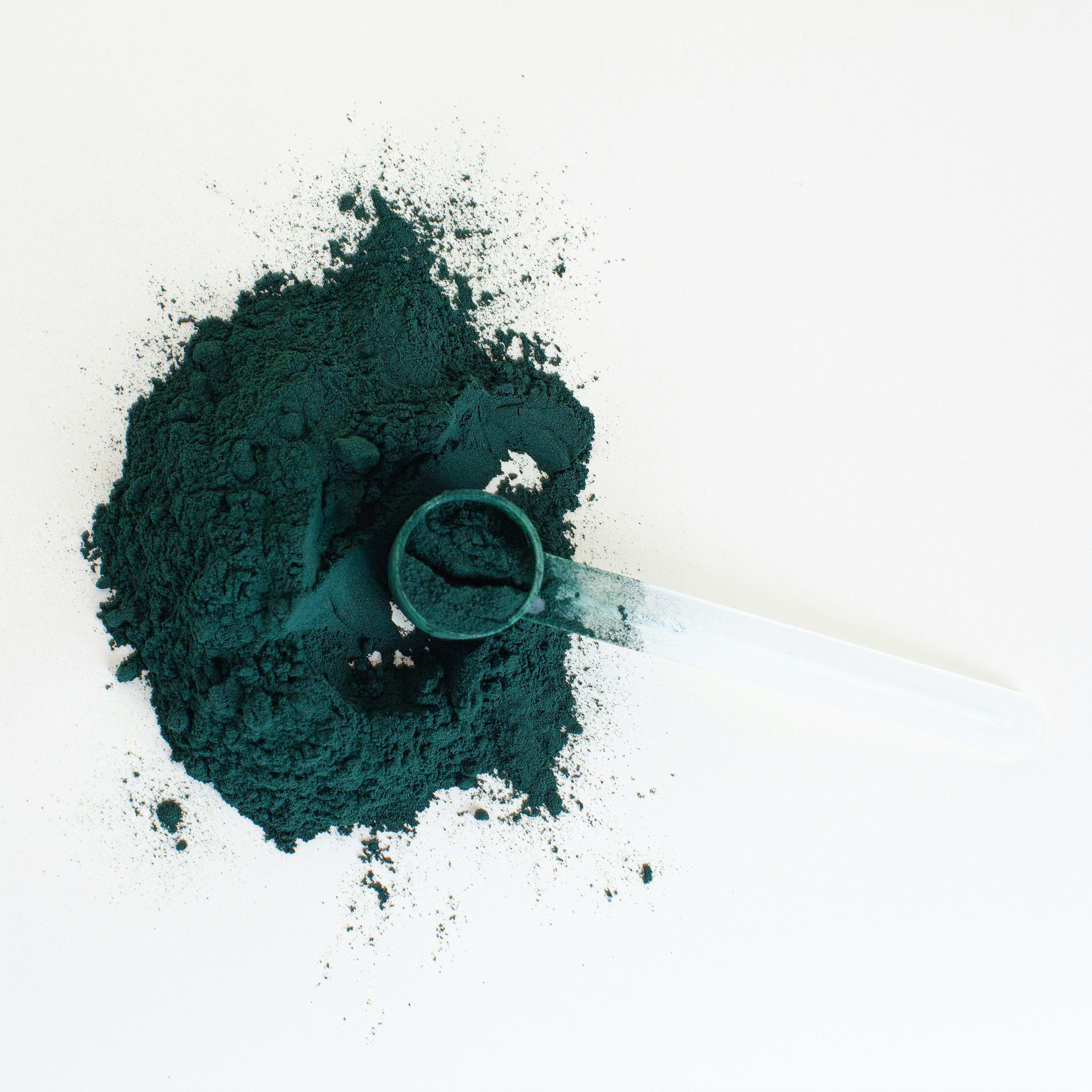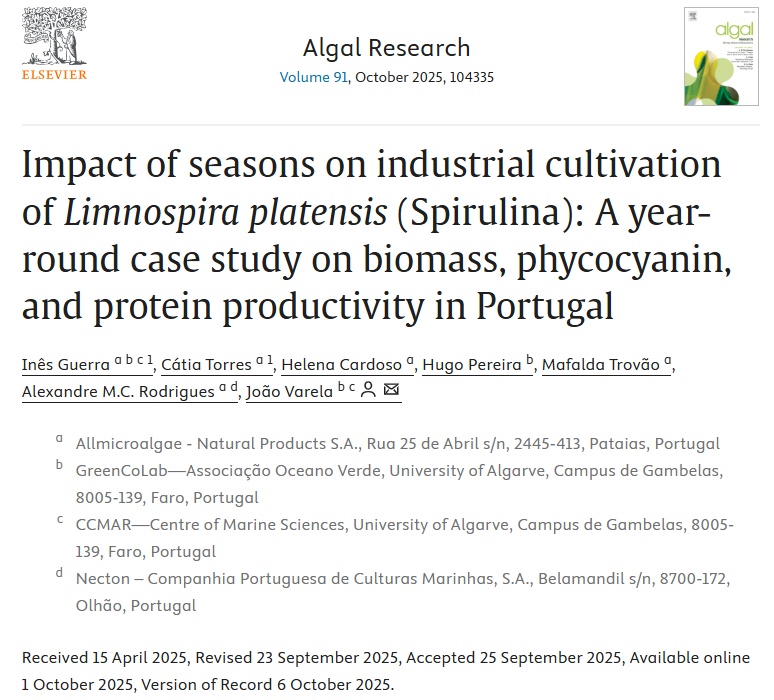

TITLE
Impact of seasons on industrial cultivation of Limnospira platensis (Spirulina): A year-round case study on biomass, phycocyanin, and protein productivity in Portugal
JOURNAL
Algal Research
AUTHORS
Inês Guerra, Cátia Torres, Helena Cardoso, Hugo Pereira, Mafalda Trovão, Alexandre M. C. Rodrigues, João Varela
ABSTRACT
Spirulina is the most commercially produced biomass, among microalgae and cyanobacteria, with extensive applications across food, feed, nutraceutical and biotechnological sectors. While Spirulina cultivation is well-characterized at laboratorial and small-scale production, critical knowledge gaps remain regarding industrial-scale production in temperate climates. Specifically, there is a lack of robust empirical data on how seasonal environmental fluctuations affect year-round productivity and the maintenance of consistent biomass quality (protein, phycocyanin content) under large-scale operational constraints. This study evaluates the year-round industrial production of Limnospira platensis in large-scale (1000 m2 and 4000 m2) raceway reactors at Allmicroalgae – Natural Products S.A., Portugal. Biomass productivity as well as protein and phycocyanin contents across different seasons and throughout the day were assessed. The influence of environmental factors such as temperature and solar radiation on productivity and biomass composition was also analyzed. Industrially grown Spirulina reached an average annual productivity of 5.1–5.6 g.m−2.d−1. Seasonal variation revealed a winter productivity decline higher than 60 %, compared to peak yields of 7.5–7.6 g.m−2.d−1 from April to September. Protein content remained consistent year-round between 58.4 and 64.7 %, whereas phycocyanin content presented strong solar radiation dependence, peaking at 15.2 % in summer and decreasing to 10.4 % in winter. Furthermore, an analysis throughout the day identified an optimal harvesting window between midday and sunset to maximize phycocyanin levels. These findings validate the industrial feasibility of year-round Spirulina cultivation in temperate climates and provide seasonal productivity forecasting and harvest timing optimization, towards protein consistency and phycocyanin yield optimization.
Back to Publications



